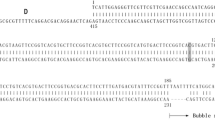Abstracts
In this study, the complete genome of the virulent strain LH of goose parvovirus (GPV) was sequenced and cloned into the pBluescript II (SK) plasmid vector. Sequence alignments of the inverted terminal repeats (ITR) of GPV strains revealed a common 14-nt-pair deletion in the stem of the palindromic structure in the LH strain and three other strains isolated after 1982 when compared to three GPV strains isolated earlier than that time. Transfection of 11-day-old embryonated goose eggs with the plasmid pLH, which contains the entire genome of strain LH, resulted in successful rescue of the infectious virus. Death of embryos after transfection via the chorioallantoic membrane infiltration route occurred earlier than when transfection was done via the allantoic cavity inoculation route. The rescued virus exhibited virulence similar to that of its parental virus, as evaluated by the mortality rate in goslings. Generation of the pathogenic infectious clone provides us with a powerful tool to elucidate the molecular pathogenesis of GPV in the future.





Similar content being viewed by others
References
Bossis I, Chiorini JA (2003) Cloning of an avian adeno-associated virus (AAAV) and generation of recombinant AAAV particles. J Virol 77(12):6799–6810
Calnek BW, Barnes HJ, Beard CW, Mcdougald LR, Saif YM (1997) Diseases of poultry, 10th edn. Iowa State University Press, Ames, pp 777–783
Deiss V, Tratschin JD, Weitz M, Siegl G (1990) Cloning of the human parvovirus B19 genome and structural analysis of its palindromic termini. Virology 175:247–254
Derzsy D (1967) A viral disease of goslings. I. Epidemiological, clinical, pathological and etiological studies. Acta Veterinaria Academiae Scientiarum Hungaricae 17:443–448
Fang D, Wang Y, Zhen Y, Zhou Y, Jiang M, Dong G (1981) Studies on the aetiology and specific control of gosling plaque. Sci Agric Sin 4:1–9 (in Chinese)
Fang D (1962) Recommendation of gosling plaque. Veterinary Sci China 8:19–20 (in Chinese)
Tijssen P, Agbandje-McKenna M, Almendral JM, Bergoin M, Flegel TW, Hedman K, Kleinschmidt J, Li Y, Pintel DJ, Tatter-sall P (2011) The family Parvoviridae. In: King AMQ, Adams MJ, Carstens EB, Lefkowitz EJ (eds) Virus taxonomy—Ninth Report of the International Committee on Taxonomy of Viruses. Elsevier/Academic Press, London, pp 405–425
Gall-Recule GL, Jestin V (1994) Biochemical and genomic characterization of Muscovy duck parvovirus. Arch Virol 139:121–131
Gough RE, Spackman D (1982) Studies with a duck embryo adapted goose parvovirus vaccine. Avian Pathol 11(3):503–510
Hoekstra J, Smit T, Brakel CV (1973) Observations on host range and control of goose virus hepatitis. Avian Pathol 2(3):169–178
Jansson DS, Feinstein R, Kardi V, Mato T, Palya V (2007) Epidemiologic investigation of an outbreak of goose parvovirus infection in Sweden. Avian Dis 51:609–613
Jourdan M, Jousset F, Gervais M, Skory S, Bergoin M, Dumas B (1990) Cloning of the genome of a densovirus and rescue of infectious virions from recombinant plasmid in the insect host Spodoptera littoralis. Virology 179(1):403–409
Kisary J (1977) Immunological aspects of Derzsy’s disease in goslings. Avian Pathol 6(4):327–334
Kisary J, Derzsy D, Meszaros J (1978) Attenuation of the goose parvovirus strain B. laboratory and field trials of the attenuated mutant for vaccination against Derzsy’s disease. Avian Pathol 7(3):397–406
Li L, Qiu J, Pintel DJ (2009) The choice of translation initiation site of the rep proteins from goose parvovirus p9-generated mRNA is governed by splicing and the nature of the excised intron. J Virol 83(19):10264–10268
Qiu J, Cheng F, Yoto Y, Zadori Z, Pintel D (2005) The expression strategy of goose parvovirus exhibits features of both the Dependovirus and Parvovirus genera. J Virol 79(17):11035–11044
Reed LJ, Müench H (1938) A simple method for estimating fifty percent endpoints. Am J Hyg 27:493–497
Samulski RJ, Srivastava A, Berns KI (1983) Rescue of adeno-associated virus from recombinant plasmids: gene correction within the terminal repeats of AAV. Cell 33:135–143
Shien J, Wang Y, Chen C, Shieh H, Hu C, Chang P (2008) Identification of sequence changes in live attenuated goose parvovirus vaccine strains developed in Asia and Europe. Avian Pathol 37(5):499–505
Takehara K, Nishio T, Hayashi Y, Kanda J, Sasaki M, Abe N, Hiraizumi M, Saito S, Yamada T, Haritani M (1995) An outbreak of goose parvovirus infection in Japan. J Vet Med Sci 57:777–779
Wang J, Duan J, Meng X, Gong J, Jiang Z, Zhu G (2014) Cloning of the genome of a goose parvovirus vaccine strain SYG61v and rescue of infectious virions from recombinant plasmid in embryonated goose eggs. J Virol Methods 200:41–46
Zadori Z, Erdei J, Nagy J, Kisary J (1994) Characteristics of the genome of goose parvovirus. Avian Pathol 23(2):359–364
Zadori Z, Stefancsik R, Rauch T, Kisary J (1995) Analysis of the complete nucleotide sequences of goose and muscovy duck parvoviruses indicates common ancestral origin with adeno-associated virus 2. Virology 212(2):562–563
Zhi N, Zadori Z, Brown KE, Tijssen P (2004) Construction and sequencing of an infectious clone of the human parvovirus B19. Virology 318:142–152
Acknowledgments
This work was supported by the National Natural Science Foundation of China (no. 31172317), the Special Fund for Agro-Scientific Research in the Public Interest (no. 201003012), and a project funded by the Priority Academic Program Development of Jiangsu Higher Education Institutions.
Author information
Authors and Affiliations
Corresponding authors
Rights and permissions
About this article
Cite this article
Wang, J., Duan, J., Zhu, L. et al. Sequencing and generation of an infectious clone of the pathogenic goose parvovirus strain LH. Arch Virol 160, 711–718 (2015). https://doi.org/10.1007/s00705-014-2319-5
Received:
Accepted:
Published:
Issue Date:
DOI: https://doi.org/10.1007/s00705-014-2319-5




